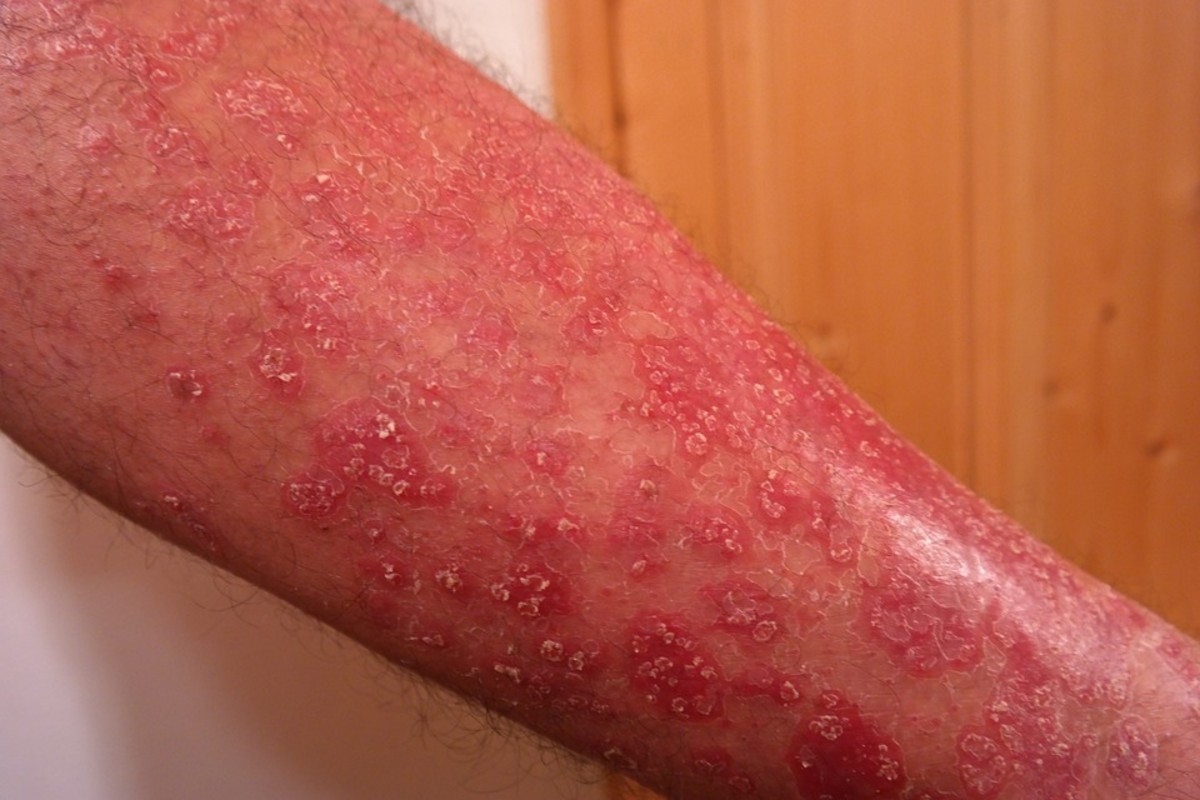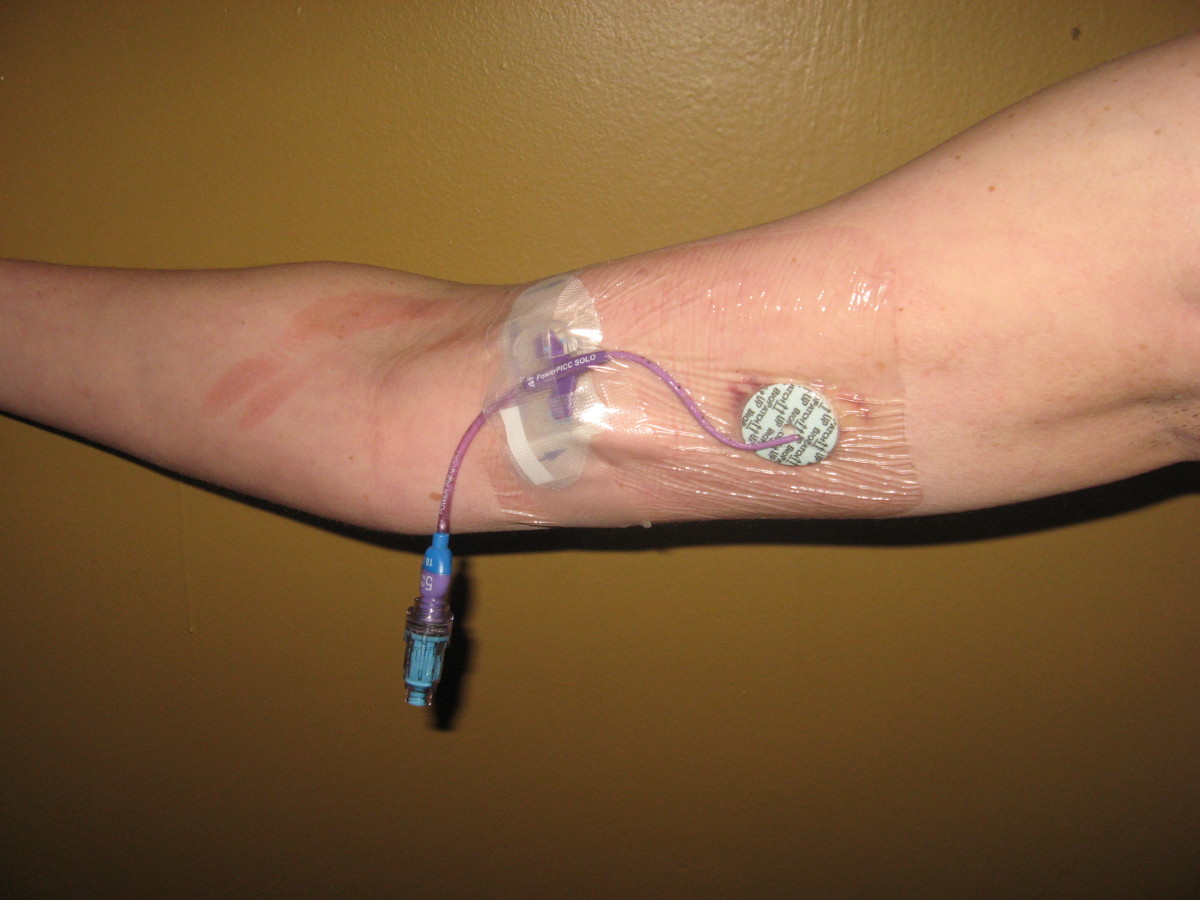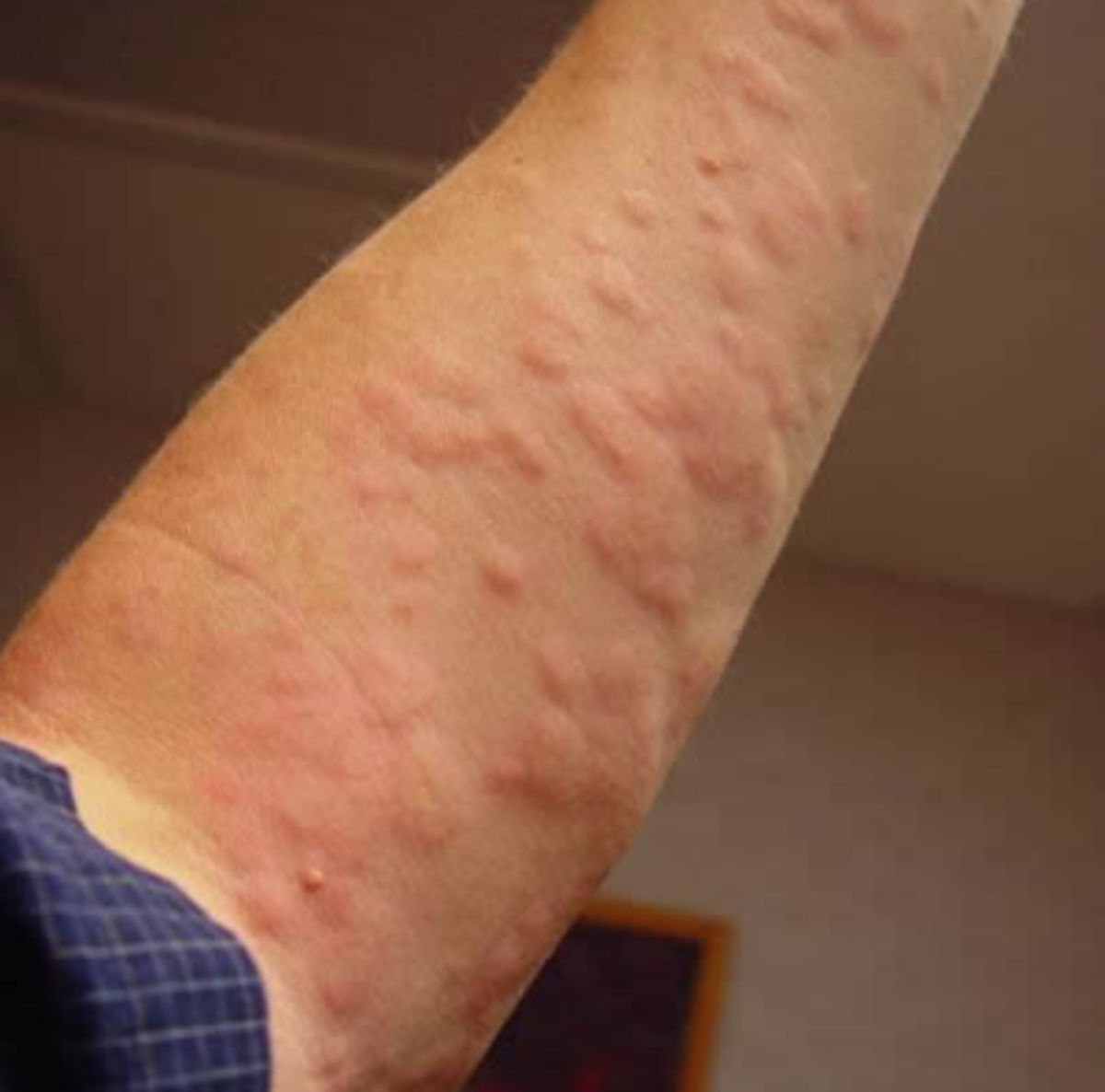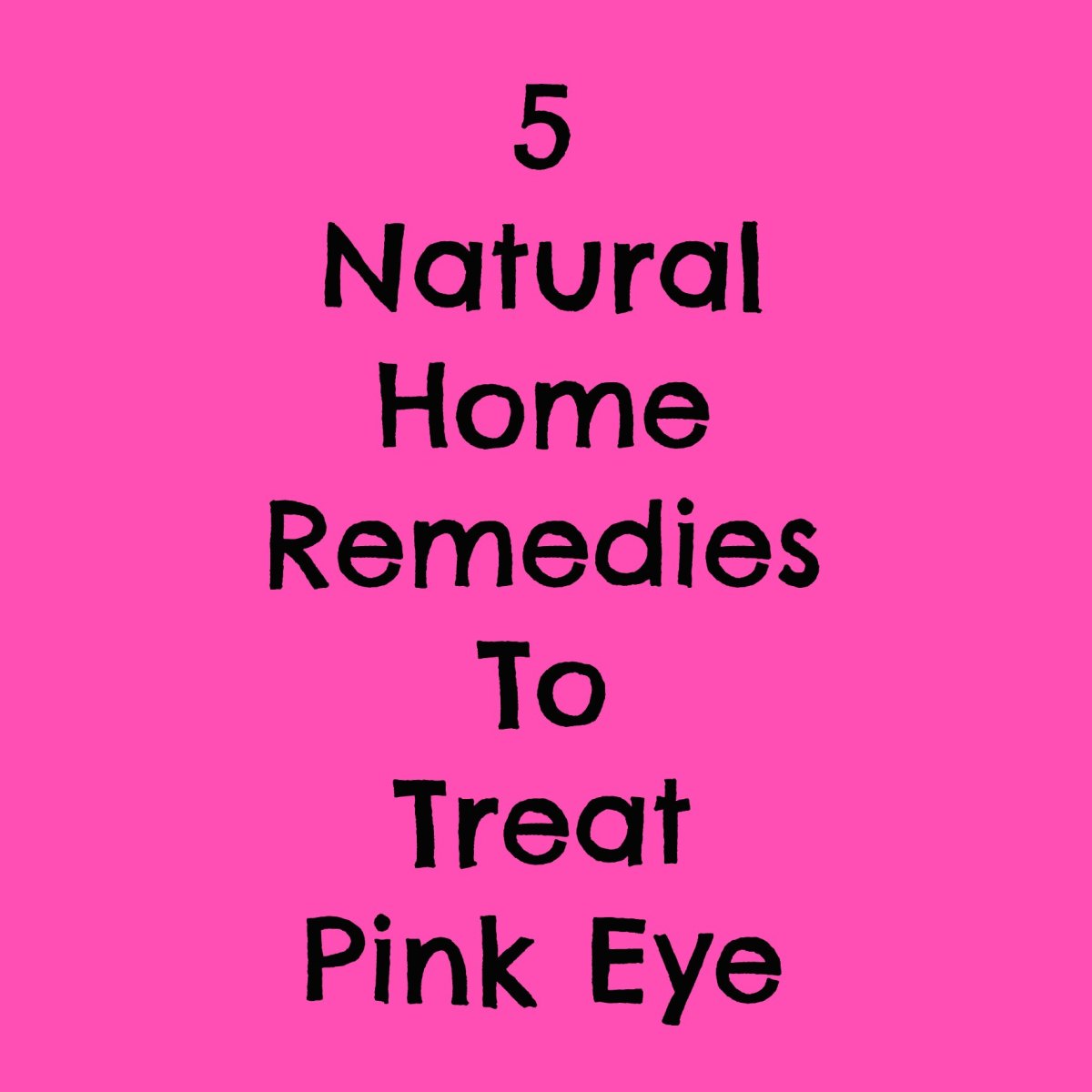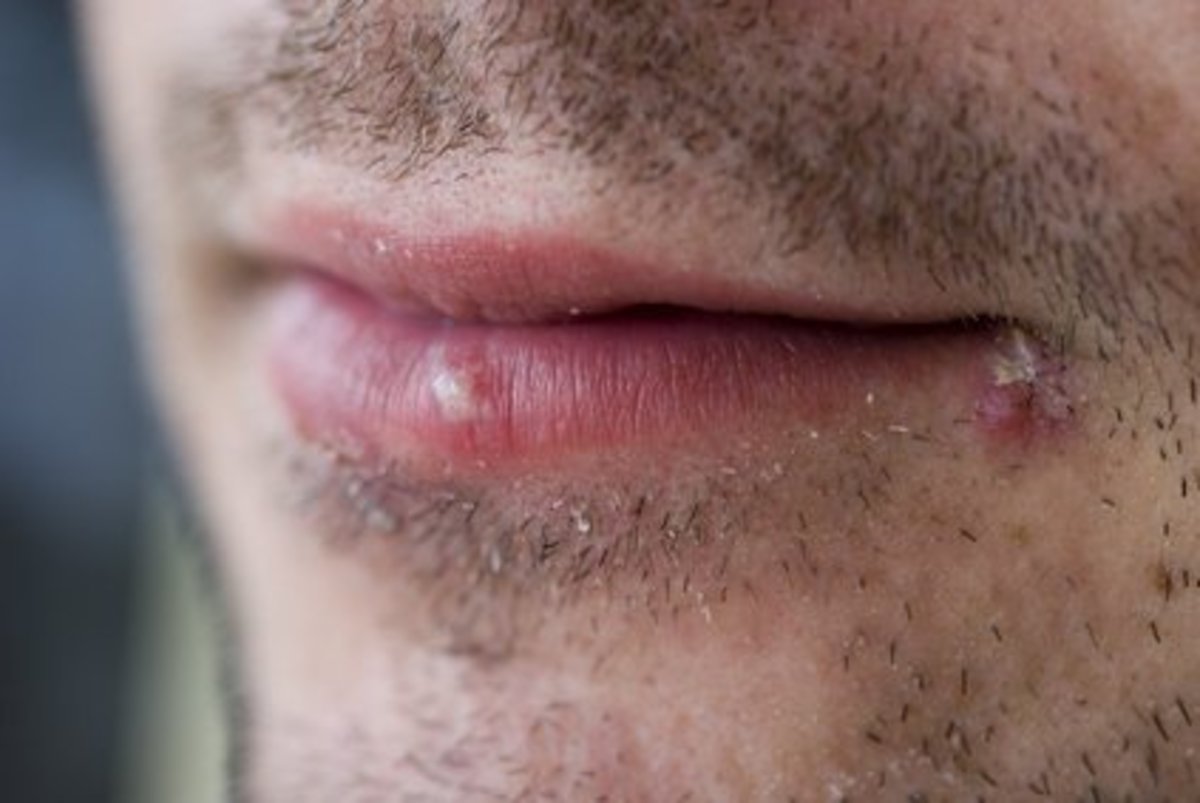Colloidal Silver and its antibiotic powers
Advantages of Alternative Medicine and Colloidal Silver
Colloidal silver the multipurpose antibiotic
Colloidal silver has been making a comeback and this is hardly surprising because this amazingly versatile and safe substance is considered to be the strongest broad-spectrum antibiotic currently known. It can be very easily made with the right equipment at a very low cost and in a very short space of time.
Again, it is hardly surprising that many small companies are manufacturing the stuff to sell at a profit. Nowadays, many more are also offering colloidal silver generators so you can make your own in the comfort of your own home. In this article I'll be having a look at what it is all about.
Before 1938, colloidal silver was one of the main forms of antibiotic treatment and was prescribed for an incredibly long list of ailments. It was used for cases of acne, arthritis, athlete's foot, bladder complaints, burns, blepharitis, colitis, cystitis, diphtheria, dermatitis, diabetes, dysentery, ear-ache, Eustachian tube problems, eczema, fibrositis, furunculosis, genital herpes, gonorrhoea, impetigo, influenza, intestinal trouble, keratitis, leprosy, lupus, lymphagitis, malaria, Menier's disease, meningitis, neurasthenia, ophthalmic disorders, canine parvo virus, pneumonia, pleurisy, prostate disease, pruritis ani, quinsy, rheumatism, ringworm, rhinitis, scarletina, seborrhoea, septic ulcers, sepsis, septicemia, skin cancer, shingles, soft sores, spruce, staphylococcus infections, streptococcus infections, subdies inflammation, tuberculosis, tonsilitis, toxemia, typhoid, trench foot, ulcers, warts, whooping cough and yeast infections.
If that is not impressive enough, in 1994 in a lecture entitled Electro-Colloidal Silver: the Amazing Anti-Microbial given at the Natural Products Expo West in Arnheim, James South stated that in micro-concentrations of 3-5 ppm (parts per million) it has been proven to be effective in combating over 650 different infectious conditions.
The use of traditional antibiotics, which are used to treat only six or seven types of infection, hardly compares well against these figures. E. M. Crooks stated in Metals and Enzyme Activity that colloidal silver kills pathogenic organisms in three or four minutes after contact and that there is no known microbe that is not killed in six minutes or less. Further, that there are no side-effects whatsoever from the highest concentration of it.
Colloidal Silver Replies on the Blue Man
Colloidal silver generator
Colloids for health
Echoing this, A. B Searle in The Use of Colloids in Health and Disease also pointed out that an important advantage of using colloidal silver is that it has no recorded side-effects.
It is nearly tasteless, completely odourless and non-toxic. The evidence from laboratory tests shows that destructive bacteria, virus, protozoan and fungal organisms are all killed within minutes of contact and that there is no known disease-causing organism that can survive in the presence of even minute traces of the chemical element of metallic silver. This is because these micro-organisms use a specific enzyme in their metabolism which the silver, acting as a catalyst, effectively disables. So, if it can do all that then why have we not heard about it before? Some people feel that knowledge of its properties, although known, have been deliberately withheld from the public so that vested interests can make huge profits from antibiotics they manufacture and sell.
It is significant to note that it was in the 1940s that antibiotics were first being aggressively marketed by the pharmaceutical companies around the time that public knowledge and use of colloidal silver was on the wane. However, a far less conspiratorial reason for its lack of widespread use until recently again could well be the very high cost of production on a commercial scale.
Retail price has ranged from $100 to $200 an ounce. The American Food and Drug Administration (FDA) has stated in a letter of September 13th, 1991 from Consumer Safety Officer, Harold Davies that because it is a pre- 1938 drug (by over 50 years) that it may now be marketed. The FDA has no jurisdiction over it because it is a pure mineral element in any case.
Whatever the truth of the matter is, colloidal silver is back and easy enough to make at a very cheap price. Part of its comeback can be traced to the 1970s, when the late Dr. Carl Moyer, chairman of Washington University's Department of Surgery, obtained a grant to research a better treatment for burn victims and began working with a Dr. Harry Margraf, a biochemist, on discovering a strong but safe antiseptic to treat large areas of the body. Dr Margraf is reported to have claimed that " Silver is the best all around germ-fighter we have."
From this research, and that of other scientists, hundreds of new uses for silver colloids were found. Nowadays, people are finding new uses for it all the time. Some examples of its versatility are that it can be used as a gargle or mouthwash, as a deodorant, as a sterilising solution and disinfectant for cleaning purposes, it can be made into a spray for plant-care or used to rinse fruit and vegetables. A few drops can even be added to milk to help delay it spoiling. So what exactly is a colloid and how is it made?
A colloid is the smallest particle a pure element can exist in before being diminished even further down to atomic size. A colloidal particle can be suspended in a carrier liquid like water. The colloid still keeps its individual properties and, because it is so small it means that it can far extend its range of potential contact when in this form. A lump of silver has a small surface area but broken down into countless microscopic colloids it can obviously go very much further indeed.
Taking its healing properties with it the silver in this state can reach all areas of the human body, which it would have been unable to have made contact with if it had stayed as a metallic lump. Colloidal silver is made by the basic process of the electrolysis of water using pure electrodes of silver (.999 fine).
It is vitally important that the silver is that pure because impurities might be toxic even though colloids are reported to have a zero toxicity due to their minute size. Sterling silver is no use because it contains traces of nickel and copper and we are seeking to make colloidal silver not colloidal nickel or copper and silver mix!
Mark Metcalf writing in an article for Perceptions, tells of an experiment he conducted on himself by preparing and drinking a 16 ounce solution of well over 250ppm and repeating this for another four days so that he had a daily intake of five 16 ounce glasses of a 5ppm solution. Besides testing its toxicity he was also seeing if it harmed beneficial bacteria and intestinal flora and so he deliberately took no precautions of eating live yogurt or taking cultured acidophilus. The only side-effect he noticed was that he felt better than before he started.
This confirms what pharmacist Ron Barnes, R.Ph. (Capitol Drugs, Los Angeles) says for he claims that " Many strains of pathogenic microbes-viruses, fungi, bacteria or any other single-celled pathogen-resistant to other antibiotics are killed on contact by colloidal silver and are unable to mutate. However, it does not harm tissue-cell enzymes or friendly bacteria."
In fact colloidal silver is the only form of the metal that can be used safely as a health supplement. This is because it gets absorbed into the bodily tissues at a slow enough rate, which does not inflame them in any way unlike silver nitrate, which is damaging due to its caustic nature.
Getting back to the manufacturing process by electrolysis: a positive electrode of pure silver and a negative electrode of the same material are placed so that they reach down into a glass vessel containing distilled water. It is important that they do not touch which would short circuit the process. A small electrical current is sent through water and the silver colloidal particles break away from the positive electrode or anode. This causes a visible cloud of plumes like smoke to appear around the electrode and to quite rapidly start to fill the vessel as the particles move away from their source.
These particles are 1.26 angstroms or .00001 microns (a micron is 1/1000 of an inch) in size and this is the only size they can be despite claims by some advertisers who may say that their colloidal silver contains " the finest particle size, etc."
The strength of the suspension, measured by how concentrated it is, is dependent on the quantity of water and the length of time the process is allowed. Ideally the procedure should be conducted in a darkened room because light can spoil the colloidal silver by oxidising it and causing it to blacken. A black deposit of silver oxide often forms on one of the electrodes too and this should always be wiped clean. The problem is that the silver is light sensitive but, fortunately, nowhere near as sensitive as the silver nitrate that enables camera film to be developed. It does. however, mean that colloidal silver should always be kept in a thoroughly opaque or tinted container after making it.
As stated earlier on, there are many firms selling colloidal silver generators at a variety of prices from around £50 and upwards. These are ideal for their purpose and represent a considerable saving in the long run because a small bottle of colloidal silver sells between £10-£20 and most of this liquid is water! The only thing about the generators is that if you buy one you may well be disappointed when you discover what it actually consists of.
A workable generator can be easily put together at a fraction of the usual selling price and you don't need to be a skilled electrician either! According to Dr. Robert C. Beck's instructions his design is "idiot proof!"
This is how you go about constructing one for yourself: Get three 9v regular transistor radio batteries, three battery snap-on lead connectors, two insulated alligator clips, either one 'grain-of-wheat' 24v 40mA miniature incandescent bulb or a sturdier 12v 60mA bulb, about a foot of 3/32" heat-shrink insulation tubing, about 10 inches of pure silver wire and another foot of 2-conductor stranded insulated wire to go on the clip-leads.
Most of these components should be readily available from shops that sell electrical spare parts and tools. Pure silver wire is available from electro-plating firms, foundries, precious metal dealers, etc. but always insist on its purity. You may wish to mount and house your generator in a plastic container or some form of box and this can either be bought or constructed to your own design. Most commercially available generator models come in solid plastic boxes.
Take the three snap-on connector clips for the batteries and solder them in series (red to black) to provide 27 volts. Then connect the miniature lamp in series with either (positive or negative) output lead. Solder a red alligator clip to the anode (positive) and a black insulated clip to the cathode (negative) connector lead wires and then, using a heat-gun or match shrink insulation over the soldered connections. Assemble this in your choice of container and you are ready to make your first batch of colloidal silver.
Fill a glass with about 8 oz (half pint) of distilled water (for best quality colloidal silver for internal consumption) or bottled or tap water for all other purposes, and then take two pure silver wires about 5" long and bend the top inch over so it will rest securely over the rim of the glass. This should leave you with 4" which can be submerged in the liquid. With distilled water it is best to stir in a very small amount (no more than a drop) of dissolved sea-salt solution, available from health stores.
This will lower the resistance of the water for better results. Make sure you never use table salt, however, as this contains impurities such as aluminium, iodine and silica. There is no critical spacing between the electrodes but if they touch it will short circuit and waste your batteries. As soon as you connect both wires to alligator clips the lamp should glow and show you that it is working.
Leave it for about three minutes and at a temperature of about 72F it will produce colloidal silver of around 3ppm strength. You should see a cloud, like smoke under water, forming around the one electrode and this will increase to colour the water in the glass.
If you increase the temperature of the water, each additional 10%F will double the ppm for a given time. After the three minutes disconnect the silver wires and stir the liquid with a plastic non-conductive fast-food knife, fork or spoon. Store your colloidal silver in a brown glass or plastic container.
Never make or store colloidal silver in metal containers. Clean the blackish silver oxide deposit from the anode with scouring pad and wipe with a paper tissue so you are ready for next time. The batteries will make hundreds of batches of colloidal silver but when the bulb is glowing only very slightly and hardly any colloidal smoke can be seen in the water then is the time to replace them with new ones.
The suggested adult dosage is one to several 8oz of colloidal silver stock solution straight or diluted in another 6 to 8oz of water and taken no more than three times in twenty four hours. An 8oz glass can be ingested directly with no harmful side-effects.
Many manufacturers are advertising 'golden colloidal silver,' but the only advantage this has is a longer shelf life. It is harder to make and has an unpleasant bitter taste but if you wish to produce this use a tall, narrow glass for the 6 to 8 oz of distilled water but add no saline solution at all. Because the water will not gain conductivity, as it does with added salt, a much longer time is required and the process will take about 45 minutes. This should make a concentration of about 10ppm colloidal silver. Keep an eye on it though, or if left too long it will turn a murky brownish colour and then go black.
If this happens throw it away and start again and remember that the process is best conducted in a darkened or low-light room. So, there you have all the basic details of colloidal silver and how to make it.
With all the news about the dangers of swine flu I would think that colloidal silver would be a good thing to have a protection against it seeing as it works against ordinary flu and colds.


